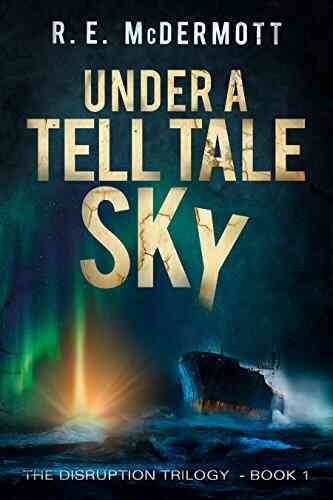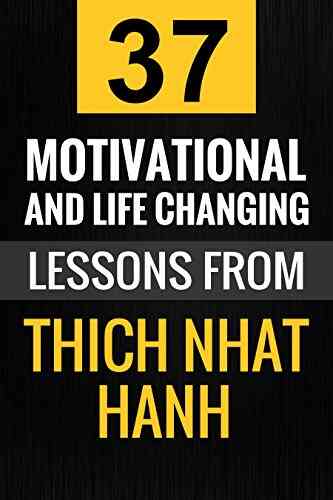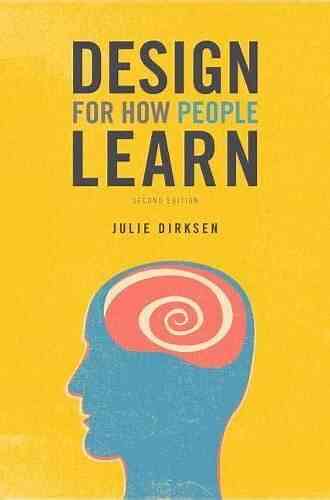Design For How People Learn: Creating Engaging and Effective Learning Experiences

In today's fast-paced and information-driven world, learning has become an integral part of personal and professional growth. Whether it is acquiring new skills, pursuing higher education, or staying updated with industry trends, the ability to learn efficiently and effectively is crucial. As a result, designing learning experiences that cater to the needs and preferences of individuals has gained significant importance.
When it comes to designing for how people learn, an understanding of cognitive psychology and educational theories can make a significant difference. By incorporating these principles into the design process, educators and instructional designers can create engaging and effective learning experiences that optimize knowledge retention and transfer.
The Role of Cognitive Psychology in Learning Design
Cognitive psychology focuses on how people acquire, process, and retain information. It examines the mental processes underlying learning, memory, problem-solving, and reasoning. Designing with cognitive psychology in mind can help create learning experiences that align with how our brains naturally function, resulting in improved learning outcomes.
4.6 out of 5
| Language | : | English |
| File size | : | 16440 KB |
| Text-to-Speech | : | Enabled |
| Screen Reader | : | Supported |
| Enhanced typesetting | : | Enabled |
| Word Wise | : | Enabled |
| Print length | : | 459 pages |
One essential aspect of cognitive psychology is the concept of working memory. Working memory refers to the limited capacity of our brains to hold and manipulate information. To maximize the efficiency of working memory during learning, designers can:
- Chunk information: Breaking down complex concepts into smaller, manageable 'chunks' can help learners process information more easily and effectively.
- Prioritize important content: Highlighting and emphasizing key information can help learners focus their attention and retain crucial concepts.
- Provide opportunities for active engagement: Incorporating interactive elements, such as quizzes, games, or simulations, can promote active learning and improve knowledge retention.
Constructivist Learning Theory in Design
Another crucial theory in learning design is constructivism. According to this theory, learning is an active process where learners construct knowledge and meaning through their interactions with the environment. Designers can incorporate constructivist principles to facilitate deeper understanding and engagement:
- Encourage problem-solving and critical thinking: Present learners with authentic problems or scenarios that require them to apply their knowledge and think critically to find solutions.
- Promote collaboration and social learning: Provide opportunities for learners to interact with peers, share knowledge, and engage in discussions. This can enhance understanding through different perspectives and foster a sense of community.
- Provide timely and constructive feedback: Feedback plays a crucial role in learning. Designers should ensure learners receive timely and meaningful feedback to guide their progress and foster continuous improvement.
Personalization and Individualized Learning
One-size-fits-all approaches to learning often fail to address the unique needs and preferences of individuals. Personalization and individualized learning aim to overcome this limitation by tailoring the learning experience to each learner's specific requirements. This approach can lead to higher engagement and better learning outcomes.
Designing for personalization involves:
- Adaptive learning paths: Offering different learning pathways based on individual knowledge levels and progress. This ensures learners receive content that is challenging enough to promote growth without overwhelming them.
- Responsive design: Creating learning experiences that seamlessly adapt to different devices and modes of learning. This allows learners to access content across various platforms without sacrificing the user experience.
- Learner analytics: Leveraging data analytics to track learner progress, identify areas of improvement, and provide personalized recommendations for further learning.
The Future of Learning Design: Emerging Trends and Technologies
As technology continues to advance, new possibilities for learning design are constantly emerging. Here are some key trends shaping the future of learning experiences:
- Virtual and Augmented Reality (VR/AR): VR/AR technologies offer immersive and interactive learning experiences, allowing learners to engage with content in a realistic and hands-on manner.
- Artificial Intelligence (AI) in learning: AI can personalize learning experiences by analyzing individual learning patterns and adapting content accordingly. It can also provide intelligent tutors or virtual assistants to guide learners throughout their learning journey.
- Microlearning: Recognizing the shrinking attention spans, microlearning delivers content in small and focused chunks, making it easier for learners to consume and retain information.
- Social and collaborative learning: With the rise of social media and online communities, collaborative learning environments are becoming more prevalent. These platforms facilitate knowledge sharing, group projects, and peer feedback to enhance learning outcomes.
, designing for how people learn is a complex and dynamic process that requires a deep understanding of cognitive psychology, educational theories, and the specific needs of each learner. By incorporating principles of cognitive psychology, constructivist learning theory, personalization, and leveraging emerging trends and technologies, designers can create learning experiences that are engaging, effective, and tailored to the individual.
4.6 out of 5
| Language | : | English |
| File size | : | 16440 KB |
| Text-to-Speech | : | Enabled |
| Screen Reader | : | Supported |
| Enhanced typesetting | : | Enabled |
| Word Wise | : | Enabled |
| Print length | : | 459 pages |
Products, technologies, and workplaces change so quickly today that everyone is continually learning. Many of us are also teaching, even when it's not in our job descriptions. Whether it's giving a presentation, writing documentation, or creating a website or blog, we need and want to share our knowledge with other people. But if you've ever fallen asleep over a boring textbook, or fast-forwarded through a tedious e-learning exercise, you know that creating a great learning experience is harder than it seems.
In Design For How People Learn, Second Edition, you'll discover how to use the key principles behind learning, memory, and attention to create materials that enable your audience to both gain and retain the knowledge and skills you're sharing. Updated to cover new insights and research into how we learn and remember, this new edition includes new techniques for using social media for learning as well as two brand new chapters on designing for habit and best practices for evaluating learning, such as how and when to use tests. Using accessible visual metaphors and concrete methods and examples, Design For How People Learn, Second Edition will teach you how to leverage the fundamental concepts of instructional design both to improve your own learning and to engage your audience.
Do you want to contribute by writing guest posts on this blog?
Please contact us and send us a resume of previous articles that you have written.




















Light bulbAdvertise smarter! Our strategic ad space ensures maximum exposure. Reserve your spot today!

 Isaac MitchellThe Pirate Bloodlands Collection by Harold Schechter: A Fascinating Voyage...
Isaac MitchellThe Pirate Bloodlands Collection by Harold Schechter: A Fascinating Voyage...
 Clayton HayesLesser Of Two Evils Snyder: The Controversial Director Who Divides Hollywood
Clayton HayesLesser Of Two Evils Snyder: The Controversial Director Who Divides Hollywood Alfred RossFollow ·11.2k
Alfred RossFollow ·11.2k Foster HayesFollow ·15.3k
Foster HayesFollow ·15.3k Bo CoxFollow ·5.7k
Bo CoxFollow ·5.7k Jace MitchellFollow ·2.4k
Jace MitchellFollow ·2.4k Deacon BellFollow ·7k
Deacon BellFollow ·7k Houston PowellFollow ·3.5k
Houston PowellFollow ·3.5k Ross NelsonFollow ·17.2k
Ross NelsonFollow ·17.2k Barry BryantFollow ·9.7k
Barry BryantFollow ·9.7k

 Dashawn Hayes
Dashawn HayesUnveiling the Intriguing World of Stephanie Plum, Kate...
Chapter 1: Stephanie Plum – An...

 Colin Richardson
Colin RichardsonRenegades: The Last Gunfighter 12 - A Heart-Pounding...
Get ready for an action-packed ride as we...

 Emmett Mitchell
Emmett MitchellThe Rainbow Beyond Tears - A Journey of Healing
Have you ever wondered what lies...

 Bret Mitchell
Bret MitchellUnveiling the Secrets Beneath the Tell Tale Sky: A...
Have you ever looked up at the sky and...

 Corey Hayes
Corey Hayes37 Motivational And Life Changing Lessons From Thich Nhat...
Thich Nhat Hanh is a renowned Zen master,...

 Jace Mitchell
Jace MitchellBuy Bullet: An Orphan Short Story
Are you ready to embark on a gripping...

 Branson Carter
Branson CarterAlbion Dark Long Poem: An Enchanting Journey into the...
Are you ready to immerse yourself in...

 Jorge Amado
Jorge AmadoThe Hostile Trail Matt Slaughter: A Captivating Journey...
Are you ready to embark on a thrilling...

 Luke Blair
Luke BlairThe Adorable Grandma Peek Boo Crochet Pattern 131: Create...
Have you been searching for the perfect...

 Bret Mitchell
Bret MitchellThe Battle of Corrin: A Turning Point in the Known...
When it comes to pivotal moments in...

 Andres Carter
Andres CarterLittle Gnome Home Crochet Pattern - Create Your Own...
Imagine a world where whimsical creatures...

 Bradley Dixon
Bradley DixonTerraforming The Atmosphere Of Venus: A Journey Towards...
Are you ready to embark on a journey that...
4.6 out of 5
| Language | : | English |
| File size | : | 16440 KB |
| Text-to-Speech | : | Enabled |
| Screen Reader | : | Supported |
| Enhanced typesetting | : | Enabled |
| Word Wise | : | Enabled |
| Print length | : | 459 pages |
















